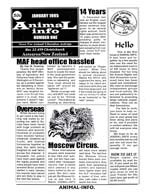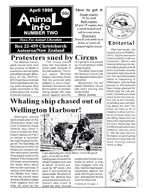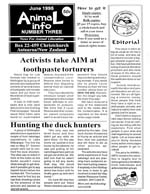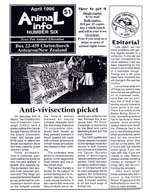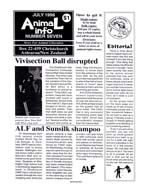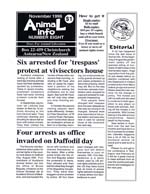The Archives
-
No Compromise, Periodicals
No Compromise #20-22
11.15.12 | PermalinkNo Compromise #20-22 (2003. Santa Cruz / San Francisco, CA)
No Comp scored another great year in 2003, this time by going deeper into practical instructions for campaigning, and also by examining the smaller stories in greater detail. While the high profile victories of anti-HLS activists were given their due, inspirational figures who had passed on were also given touching coverage. Issue #20 features articles on early Band of Mercy and Animal Liberation Front founder Sue Smith, and Sweden’s animal lib die-hard, Ake Soderlund. Similar examinations of our past, and the courageous figures whose shoulders we stand upon, pepper the 2003 issues. Of particular note is the article on Henry Hutto in issue #21.
2003 was also the year that Rod Coronado finally got off of probation and was allowed to participate in the movement again. His writings for No Compromise were as subversive and inspiring as ever, and it is easy to see why the government considered him such a threat.
As the year progressed No Comp moved to a magazine format and tightened their graphic design skills in response to Jake Conroy’s work on the SHAC USA newsletter. These glossy issues were excellent contributions to the movement, and it is a shame that in only a few more years NC would cease to exist altogether. These information (and inspiration!) packed issues are worth reading again to inform and encourage our current actions.


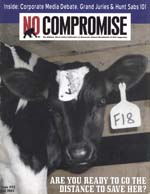
-
Periodicals
Liberate!
11.06.12 | PermalinkLiberate! #1-7 (1996-1997 Birkenhead, New Zealand)
Liberate! was published by Auckland Animal Action, one of the dozens of militant organizations that suddenly coalesced in the mid-90s. While the activities of the group itself were fairly moderate, the visual direction and rhetoric of the magazine was quite extreme. In it’s era this was appropriate. In these modern days of soy milk in every cafe and vegan cheese in every supermarket, talking about cutting off the fingers of vivisectors is certainly going to frighten away an audience that is already coming around. It wasn’t very long ago, however, that the late 80’s trend of moderation in activism was a clear failure. Dialogue about violence and sabotage was a necessary component of moving forward, and it is important to note that these discussions, thankfully, didn’t result in any missing digits.
Liberate! was not particularly well written, but there are some stand out articles about the burgeoning pro-direct action grassroots, conflicts between environmentalists and animal liberationists, and some entertaining imagery as well. Also of interest, given the current Canadian “Marineland Animal Defense” campaign, are the details of New Zealand’s 90s campaign against their own Marineland.
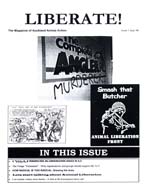
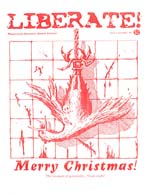
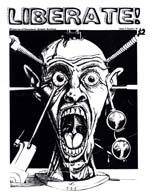
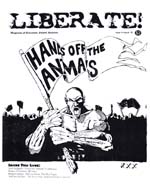
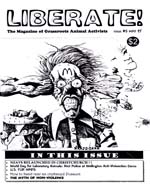
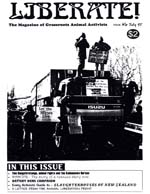
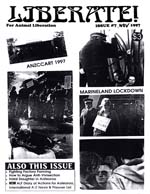
-
Periodicals
Animal Info
10.18.12 | PermalinkAnimal Info #1-8 (1995-1996. Christchurch, New Zealand)
Animal Info was a thin, photocopied newsletter that was published with the hopes of increasing the militancy of New Zealand’s animal activists. It’s pages contained news relevant to local campaigns, alongside the home addresses and phone numbers of various animal abusers. The zine’s rhetoric was, at times, over the top and even once racially insensitive. Issue #1 contains an N-bomb on the front page that was seemingly intended to make an anti-racist / speciesist point, but instead has the exact opposite effect.
Still, Animal Info is an inspiring example of committed activists organizing on a grassroots level and agitating for greater commitment in the struggle against speciesism. It’s international news coverage was impressive given the magazines small number of pages, and nicely bridges the U.S. coverage lapse between the time Open the Cages stopped publication and No Compromise began. All of us at CG would love to see this type of paper return to regional organizing in the United States and abroad.
